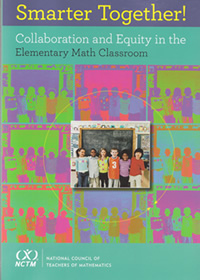As I reflect about many conversations that I have had with students and their families this year about homework, I have found myself deeply questioning who is benefiting from math homework. With current homework assignments, the students who are on track to meet end of the year standards will continue to be on track, while the students who are struggling have a negative self-concept about their mathematical abilities and intelligence reinforced night after night.
This week alone, I have had enlightening conversations with two families dedicated to helping their child in any way possible. One family stated that they are endlessly researching the Internet to understand strategies taught in class, and the other flat out stated that she did not know where to begin with helping her child. How I have appreciated the honesty!!
As a teacher, I attend trainings and have the daily support of my team to help me become proficient in strategies and thinking that the Common Core is requiring. I have had to relearn the way in which I approach math completely. I absolutely celebrate this fact! As a child, I was gifted at memorizing facts and steps, but that only got me so far. When I see the mathematical thinking that my students are doing, I am elated that they must know the “why,” and there is no right way to do math.
Having said all of this, I was curious about how research supports homework. While I know that the benefit of homework is that students gain additional practice in what they are learning in class, I still could not help wondering whether or not there are significant gains in learning. In the research that I have read, I found that there is evidence that homework is beneficial at the elementary age level, but can actually be detrimental if homework assignments are not purposely chosen (according to Robert Marzano and Debra Pickering, whose viewpoints and insights I greatly admire).
So, what to do? In my view, the Common Core State Standards are asking our students to do amazingly deep thinking—a great thing! I cannot, however, expect my families to absorb and celebrate learning, for example, the array model for multiplication, when the algorithm that we were all taught is viewed as so much more efficient and easy to understand. For now, with the standards and our newly adopted math program (Bridges) being so new, I have decided that I will no longer send math homework that requires new strategies that become frustrating to families and students. Instead, I will send home assignments that reinforce concepts that my students have already learned.
We are missing an important opportunity to excite families and students about math. Even though I will not send home the same kind of homework, I will continue to organize “Math Nights” for families so that they can understand the strategies that their students are learning in math. My biggest hope is that by keeping new strategies in class, at least for now, perceptions about our new program and the Common Core State Standards will begin to shift for the better.


